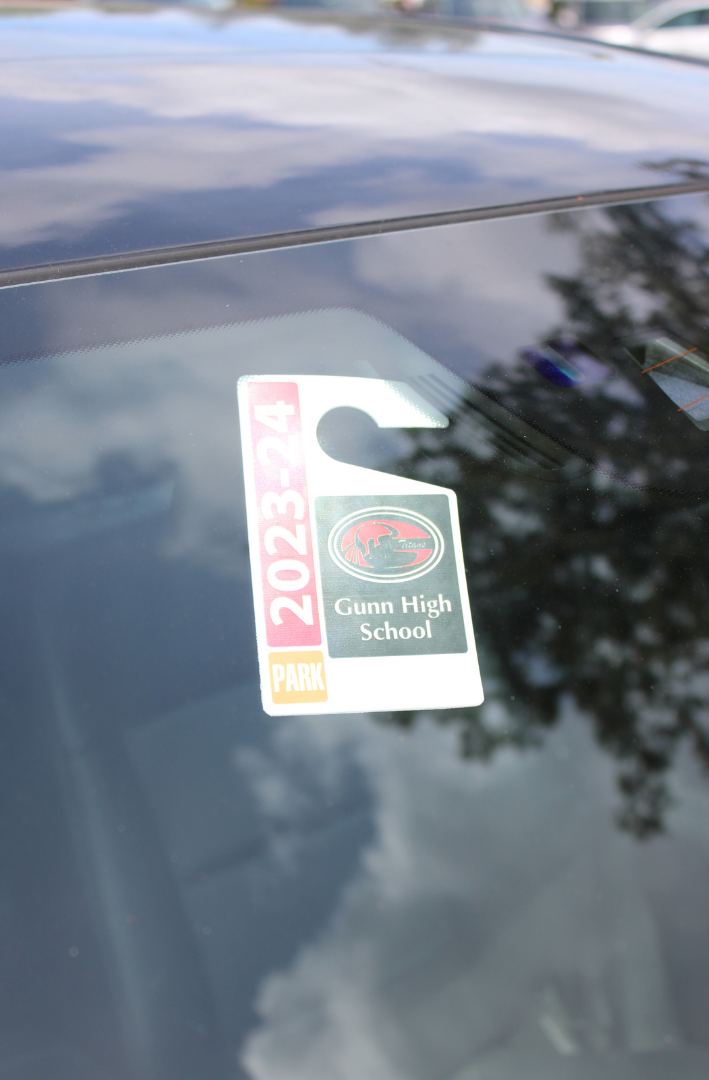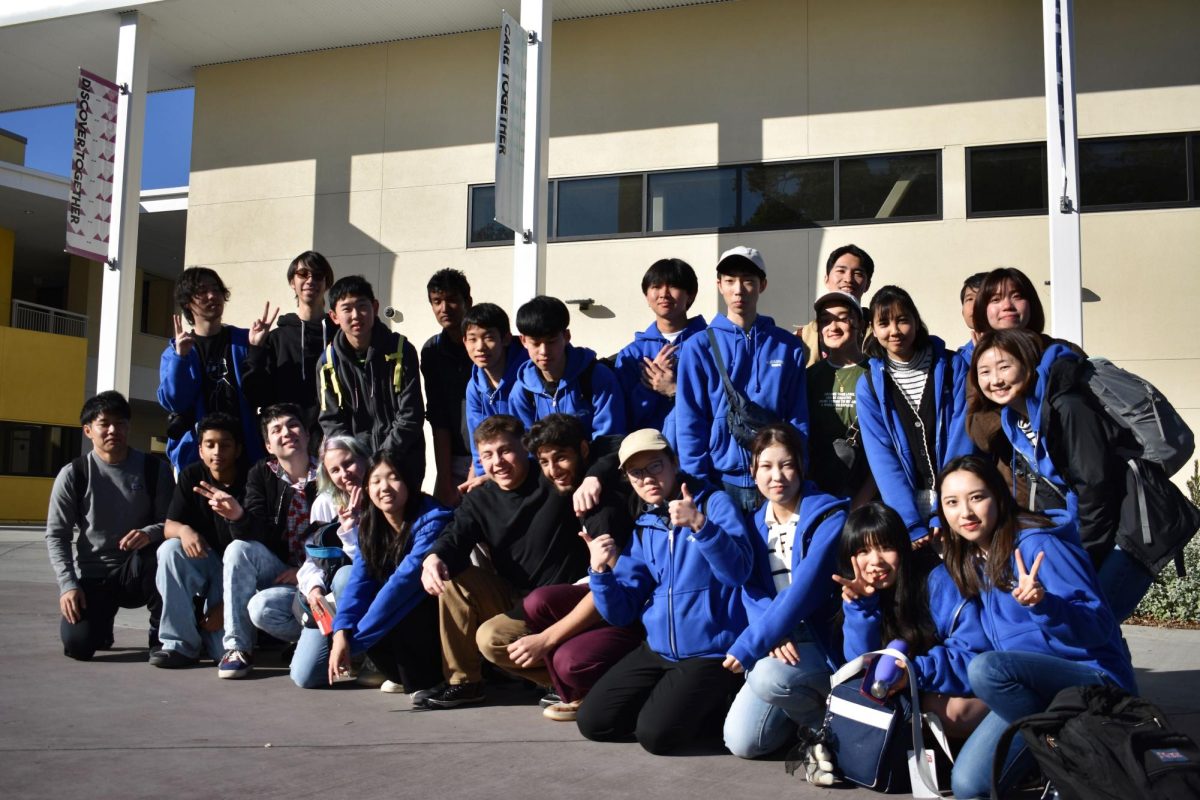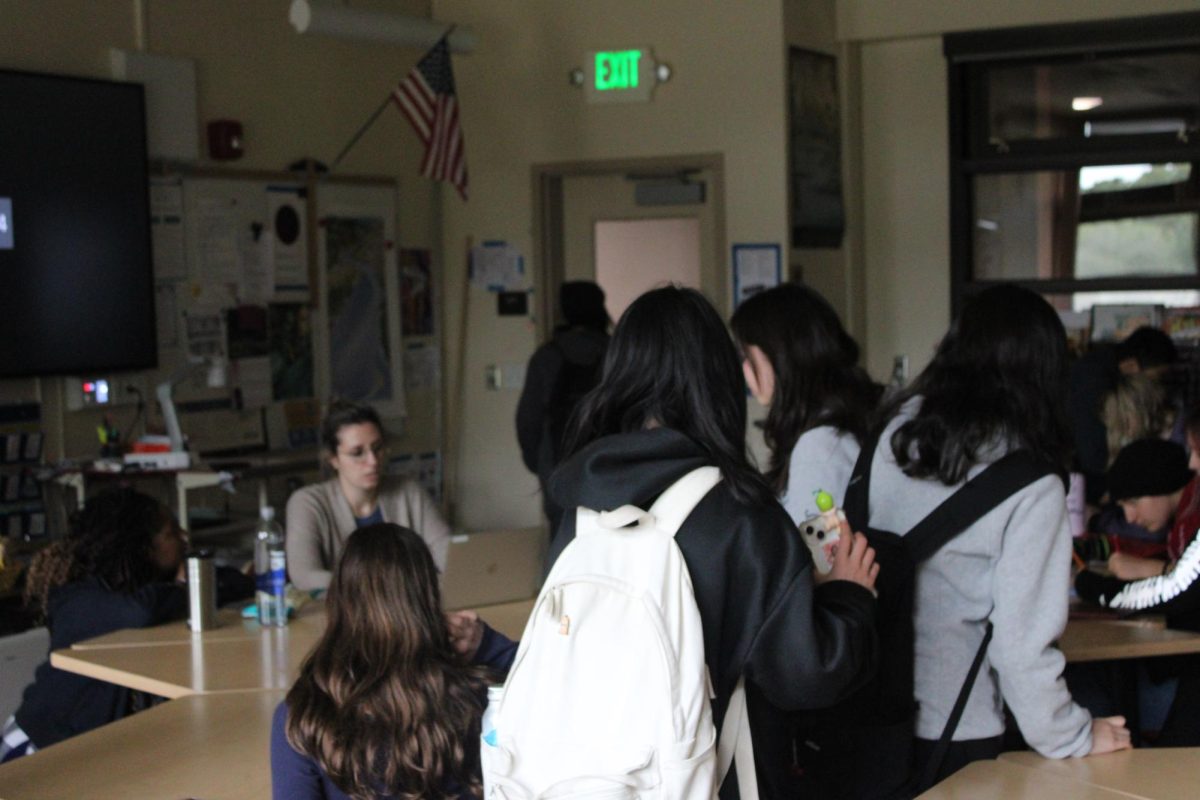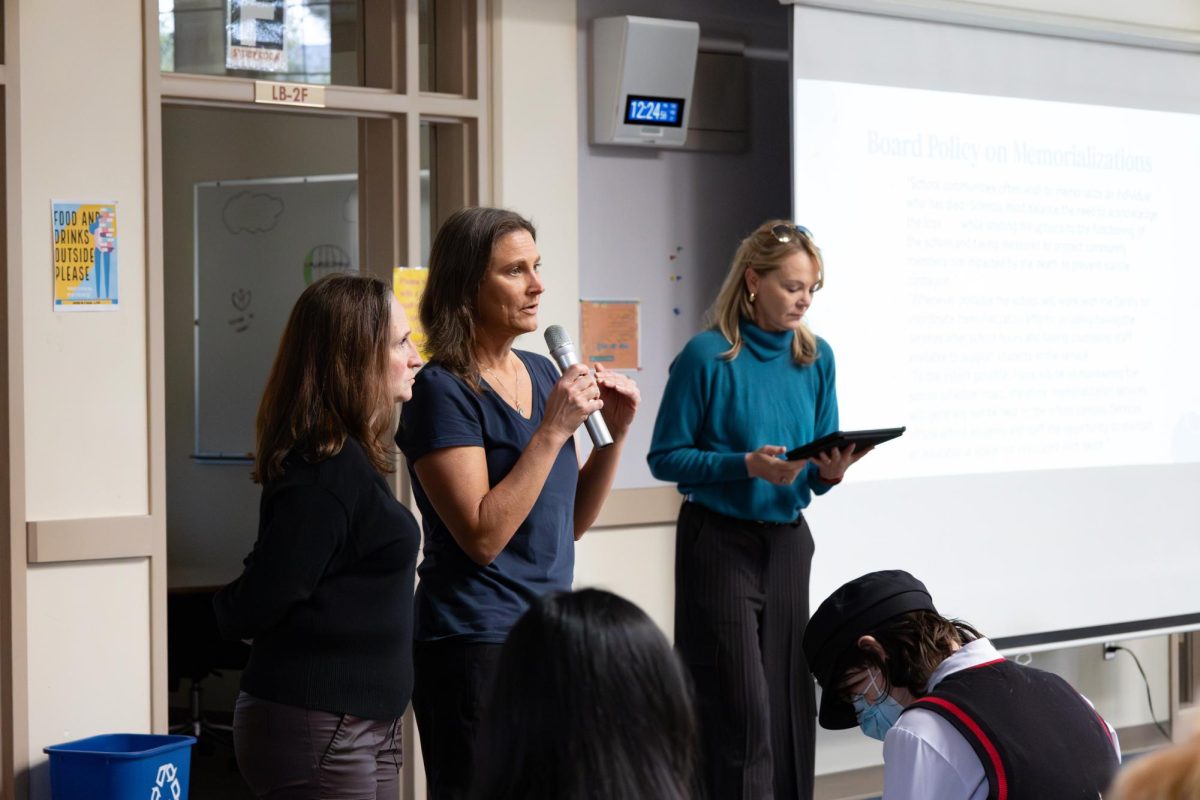
by Ashley Ngu:
Photo & Graphic by Henry Liu and Kimberly Han
As gasoline prices continue to rise following tumultuous events in the Middle East, students and staff are starting to feel the pinch in their wallets. According to the Energy and Information Administration (EIA), the average price for a gallon of gas in California climbed to $4.20 this past week. The rising prices have made several community members more conscious of how much they drive, including junior Alex Allen, who drives to school on a daily basis. “I’m a lot more stingy about driving people around and going to lunch,” she wrote in an e-mail. “My friends and I switch off driving if we go out on weekends or during lunch and preps.”
The prices are reminiscent of the $4 record highs set back in July 2008. “If you look at the price of gas in inflation adjusted terms, gas today is no higher than it was in 1918, 1981, or 2008,” economics and history teacher Phil Lyons wrote in an e-mail. “People have simply grown accustomed to the unrealistic trend of gas prices falling in real terms.” In 2008 when gas prices passed $4, Lyons began to carpool with other teachers who lived in San Francisco. English teacher Justin Brown carpools with Lyons, but because of recent parking and scheduling conflicts, has had to drive solo for the majority of each week. Due to this, Brown has to fill up his tank about three times every two weeks and tries not to drive on weekends. “I live in the Mission District of San Francisco, so I’m in a pretty central area and I make an effort to go completely on foot during the weekends, for environmental and financial reasons,” he said.
According to Gary Richards, a transportation columnist for the San Jose Mercury News, the price of gasoline is largely based on the cost of crude oil. “For every $1 increase [in crude oil barrel prices] there is about a 2.5 cent increase in the price [of a gallon of gas] at the local station,” he wrote in an e-mail. “However, there are many other factors in play. California has a special reformulated fuel that makes our prices about 25 cents more than the national average.” A gas station owner in Palo Alto, who spoke on condition of anonymity due to company policy, cited the turmoil in the Middle East as another driving factor in gas prices. “Even if the supplies aren’t affected by what’s happening in the Middle East, the fear and speculation of supply interruption are what causes the prices to go up,” he said. “The oil is still there; it didn’t go anywhere.”
“Even if the supplies aren’t affected by what’s happening in the Middle East, the fear and speculation of supply interruption are what causes the prices to go up. The oil is still there; it didn’t go anywhere.” —anonymous local gas station owner
Along with the costs of crude oil, federal and state taxes account for another 15 percent of the cost of gas according to the EIA. However, Lyons and auto tech teacher Mike Camicia say prices in the United States should be compared to those in Europe. As of last week, prices in the Netherlands reached $9.36, with similar prices across Europe. This doubling in gas prices is mainly due to high European fuel taxes, which were implemented to reduce reliance on fossil fuels and lessen pollution and traffic. “In Europe, people don’t drive around for the sake of driving around,” Camicia said. “That’s why the cars in Europe are all itty bitty econo-boxes and they have trains that go everywhere. So we’re spoiled.”
This year, physical education teacher Steve Ames decided to move more locally to Palo Alto to avoid long gas-guzzling commutes from Boulder Creek. “I ride my bike virtually everyday, thus our driving costs are super low,” he wrote in an email. “So I really have not been impacted this year except positively because I’m able to ride to school, thus saving time, helping the environment and not needing to spend money on gasoline. We still do drive, but we don’t go home to Boulder Creek nearly as much.” Ames used to fill up every four days when commuting last year, but now only heads to the pump about once a month.
Senior Alvin Man, who has to pay for gas out of his own pocket, similarly chooses to bike to school most of the time rather than drive, which allows him to fill up his tank just once every two to three weeks. “I only drive when it rains or I have to bring something big to school,” he said in an e-mail. “I also don’t drive people home unless they live along the way to my place, and if I go out to eat with friends, I usually get a ride from them.”
Though many say the increase in gas prices has been nothing but an annoyance, Lyons believes that there is a bright side because they have encouraged increased efficiency and awareness of the consumption of gas. “In reality, higher gas prices represent an opportunity,” he wrote, citing several changes implemented to decrease oil imports during the 1973 Arab Oil Embargo. “[The government mandated a] 55 mph speed limit, which was repealed in 1995, the extension of daylight savings time, which resulted in 1 percent less electricity usage for the entire nation, and the introduction of Corporate Average Fuel Economy standards. By 1986, we reduced our imports to just 23 percent of total consumption. Higher gas prices are a wake-up call.”
Though many say the increase in gas prices has been nothing but an annoyance, Lyons believes that there is a bright side because they have encouraged increased efficiency and awareness of the consumption of gas.
To maximize his gas mileage, Lyons avoids accelerating and decelerating quickly, which consumes gas rapidly. “It is my goal each day to make it from San Francisco to Palo Alto and back without using my brakes,” he wrote. “I try to scan the road ahead to plan lane changes. Most days I can actually do it. I also stick to one speed. Cars lose one percent of their fuel efficiency for every mile per hour they exceed 55. After 65 the loss grows steeper. People tailgate me, high beam me, swear and give me the finger. But I keep it slow.”
According to the Palo Alto gas station owner, customers have continued to pump with the same frequency despite increased prices. “People still have to get to work and do daily errands so the volume [of gas we sell] has not changed,” he said. Prices at his gas station reached $4 around a month ago.
For many, the rise in prices has made themwary of future increases, but has not challenged them to make severe changes to their driving practices yet. “I have definitely noticed an increase, but it is what it is,” Brown said. “It’s not a hardship for me yet but I am trying a little harder to carpool more. I’ll really start making more of an effort if prices hit $4.60.” Math teacher Rajeev Virmani, who also lives in San Francisco, echoed these sentiments. “I probably think about how much I’m driving more, but I don’t actually do anything about it just yet,” he said. “When it hits $4.74, then I’ll start changing my driving habits.”
Camicia and Richards both believe that $4 gas prices are going to become the norm in California and expect prices to go up even more in the summer due to increased demand. “Sorry for the gloomy outlook, but I think we are all going to be forced to rethink our choice of vehicles, our public transportation systems and our priorities in life to adjust for this,” Camicia said.








